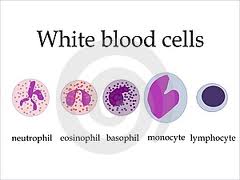
The severity of neutropenia depends on the absolute neutrophil count (ANC) in the blood
How to calculate the number of neutrophils (Absolute neutrophil count, ANC) in the blood ?
Total WBC count(uL) x % of neutrophils = neutrophil count (cells/uL)
Neutropenic Fever
Any fever (body temperature above 38.5°C) in a patient with neutropenia must be taken seriously.
It is important that if a patient develops any signs or symptoms of infection, he or she should be seen by a doctor as soon as possible and be treated with medications to fight the infection
(such as antibiotics).
Severe, life-threatening infections may occur.
Often admission to the hospital is necessary
for intravenous antibiotics.
How to Reduce Infection - Personal Hygiene
Mouth Care
Gargling helps to keep your mouth and throat clean and moist.
Do it :
¨ Before and after meals
¨ Before going to bed
Use a soft tooth brush to brush your teeth
· If you have a denture, remove and clean it everytime time you brush your teeth.
Skin
Be careful not to cut or nick yourself
e.g. when using the shaver, scissors, knives.
Preventing Infection from Others
· Avoid crowded areas e.g. cinema, shopping mall.
· Keep away from anyone with flu, rash or infections
· Consider wearing a mask when talking to someone.
· Stay away from people who have just received a vaccination.
· Do not keep fresh flowers or potted plants in your room.
· Do not clean up pet droppings.
For Adults only
· You can have sex with your partner as frequently as desired,
but keep your genital area and fingers clean.
· Avoid sex, when your partner has a cold
or when your neutrophil count is very low.
· Be sure to prevent pregnancy
as chemotherapy drugs may have undesirable effects
on pregnancy
Granulocyte Colony Stimulating Factor (G-CSF)
When is Growth Factor used ?
1. During treatment with chemotherapy to shorten the length of time that your white blood cell numbers are low.
Chemotherapy causes a reduction in the number of white blood cells in the body and you are less able to fight infection. If you develop an infection, it may make you more ill than it normally would.
If the levels of white blood cells are still low by the time you are due for the next cycle of chemotherapy, the chemotherapy has to be postponed or the dose lowered.
G-CSF may be used to reduce the risk of infection and help make sure chemotherapy treatments are given on time and at the planned dose.
How does it look like ?
G-CSF comes as a white powder to be dissolved in sterile water, or as a colourless fluid in a small glass bottle.
It's also available in a pre-filled syringe.
Prefilled syringe, site of injection
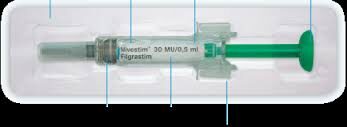
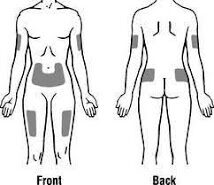
Possible Side Effects
After a G-CSF injection you'll have a much higher amount of it in your body than normal. You may have some side effects as a result, even though G-CSF is a natural substance. However, side effects aren't usually severe and get better after G-CSF treatment ends.
People react to drugs in different ways, so it is not possible to predict who is going to have side effects or which they will have. The most common side effects are outlined here but those that are rare have not been included here and therefore are unlikely to affect you.
If you notice any effects that are not listed here, discuss them with your doctor or nurse.
** It's important to let your doctor know straight away if you feel unwell or have any severe side effects, even if they're not mentioned above.
Storing Growth Factor
Filgrastim and pegylated filgrastim should be stored in the fridge (not the freezer compartment).
Lenograstim can be stored at room temperature. Follow any storage instructions given by your pharmacist.
How to Inject Growth Factor ? Watch a video
What is Neutrophil ?
Neutrophil is a type of white blood cell.
There are different types of white cell in the blood : neutrophils, lymphocytes, eosinophils, basophils and monocytes.
Neutrophils constitute about 45-75% of all white blood cells in the blood.
Neutrophils defend the body against infections.
They are an important part of the immune system.
Severity of Neutropenia
|
Neutrophil Count (cell/uL) |
Risk of Infection |
|
Less than 500 Significant neutropenia |
High risk Significant measures required |
|
500-1000 Moderate neutropenia |
Moderate risk Sufficient measures required |
|
1000-1500 Mild neutropenia |
Slightly increased risk Certain measures required |
Signs & Symptoms of Infection
Symptoms of neutropenia depends on the level of neutropenia. T
These symptoms are usually in the form of infection.
General signs and symptoms of an infection include fever, chills, and headache.
You may have stomatitis (inflammation of the mouth), swollen or painful gums, pain in the anus and skin eruptions.
Most of the infections occur in the lungs, mouth and throat, sinuses and skin.
How to Reduce Infection - Personal Hygiene
Regular Handwashing
¨ before eating
¨ before and after using the bathroom
¨ After returning home from outdoor
Keep Your Body Clean
· Take a shower or bath at least daily
· Clean your rectal area with water after each bowel movement
· Avoid constipation
Food & Drink
· Eat fresh food.
· Drink only clean and boiled water.
· Wash vegetables and fruits thoroughly.
Fruits should be peeled before eating.
· Eat freshly prepared food.
Avoid food that is cooked too long ahead of time.
· Avoid reheating food repeatedly using microwave oven.
· Keep cooking utensils and dishes clean.
Food that you should refrain from :
· Raw fish, undercooked meat
· Uncooked vegetables
· Fermented food
· Unknown source of drinking water or ice
· Food purchased from not-so hygienic food stalls or restaurants.
Growth Factors
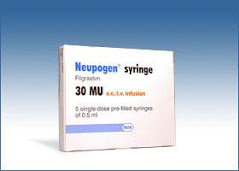
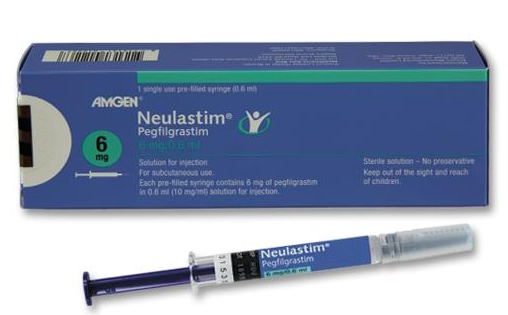
When is Growth Factor used ?
2. Stem cell collection
How often is it given ?
G-CSF is usually started a few days after chemotherapy and given daily for up to 14 days.
Pegylated filgrastim stays active in the body for longer, so it only needs to be given once with each cycle of chemotherapy.
How is G-CSF given ?
G-CSF is usually given as an injection under the skin(subcutaneously). You, or the person caring for you, can be taught how to inject G-CSF so that you can continue the treatment at home. Alternatively, the injections may be given by a nurse or your family doctor.
The levels of white blood cells in your body will be tested regularly while you're having growth factor injections.
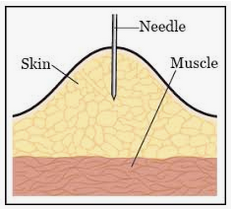
Possible Side Effects
Bone pain
You may have some discomfort or a dull ache in the bones of your pelvis, back, arms or legs. Your doctor can prescribe painkillers if needed.
Red, itchy skin
Your skin may become red and itchy around the area in which the injection is given.
Fever and chills
Your doctor may prescribe painkillers, such as paracetamol to help reduce your temperature and prevent chills.
Fluid retention
This may lead to swelling of the ankles or breathlessness.

